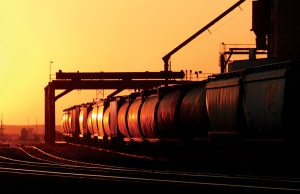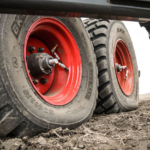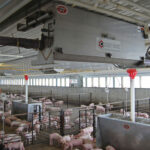Railroads and Ag: Commodities on the Line
Mark Watne, along with his family, produces a variety of crops on 6,000 acres near Velva, N.D. The land is on the edge of the Bakken Shale oil reserves, where hydraulic fracturing has made the state the second largest oil...
Railroads and Ag: Commodities on the Line
Mark Watne, along with his family, produces a variety of crops on 6,000 acres near Velva, N.D. The land is on the edge of the Bakken Shale oil reserves, where hydraulic fracturing has made the state the second largest oil...Mark Watne, along with his family, produces a variety of crops on 6,000 acres near Velva, N.D. The land is on the edge of the Bakken Shale oil reserves, where hydraulic fracturing has made the state the second largest oil producer after Texas and provided a shot in the arm to the North Dakota economy.
But the news hasn’t all been sunny for the region, where agricultural commodities have historically dominated transportation networks. Watne, who grows wheat, corn, soybeans, canola, barley and sunflowers, and owns two AGCO Gleaner® combines, believes in the booming grain harvests of 2013, producers were often relegated to a second priority when it came to rail transport.

The United Soybean Board estimates that shipping soybeans via rail, as opposed to by truck, saves an average of 20 to 30 cents per bushel.
“During the harvest, we could not deliver product to the elevators because they were all full,” he explains. “The rail lines weren’t picking it up.”
Overall, agricultural commodities dominate rail lines in many parts of the U.S. Agricultural traffic also relies heavily on major lines to the Mississippi River, Chicago, Kansas City and Houston.
That’s a good thing as long as rail can handle the capacity. The United Soybean Board estimates that shipping soybeans via rail, as opposed to by truck, saves an average of 20 to 30 cents per bushel. But what happens when rail can’t handle the traffic? That’s a growing concern, but one rail officials say is being addressed.
That’s critical, says Watne, who believes a viable transportation network is critical for the nation’s producers. He says the reason North American farmers still hold an advantage for exports in the Americas is because of their rail and highway systems. “Brazil may have the crops, but they don’t have this kind of infrastructure,” he explains.
“But that won’t last forever. We’re eventually going to see greater competition from countries who are developing their agricultural economies and infrastructure.”



